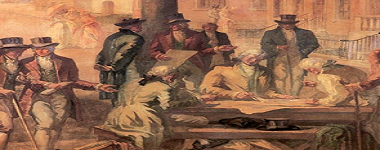As we observed in our last post on the Continental Currency Crisis, the finances of the United States remained chaotic through the 1780s as the young government moved to establish its credit. U.S. Congress was finally given the power of taxation in 1787 and, in 1789, Alexander Hamilton was appointed as the first Secretary of the Treasury. Hamilton moved quickly to begin paying off war debts and to establish a national bank—the Bank of the United States. But in 1791, a burst of financial speculation in subscription rights to shares in the new bank caused a tangential rally and fall in public debt securities prices. In this edition of Crisis Chronicles, we describe how Hamilton invented central bank crisis management techniques eight decades before Walter Bagehot described them in Lombard Street.

From Political to Financial Revolution
Although the American political revolution ended in 1783, it was soon followed by a financial revolution as the United States implemented a number of key reforms common to modern financial systems. The first American mint was established in Philadelphia in 1786 in a move to create a more stable currency. In 1787, Congress was given the power of taxation to pay off the debt, which helped the United States make significant progress toward more stable public finances. And after Hamilton was appointed Treasury Secretary, he worked to pay off war debts, in the process creating an active securities market in what were called U.S. Sixes—the U.S. 6 percent bond that the Treasury issued in 1790. But it was Hamilton’s second Report on Public Credit, delivered to Congress in December 1790, in which he called for a national bank, headquartered in Philadelphia.
The Bank Scrip Bubble of 1791
Congress approved the Bank of the United States in early 1791, and the subscription rights—called “scripsâ€â€”to the July 1791 public offering were heavily oversubscribed. The $25 scrips were a down payment on the $400 per share bank stock, with the balance due over the course of the next two years. But only a quarter of the $400 due was in gold or silver specie; the remaining 75 percent was to be paid in Treasury securities.

